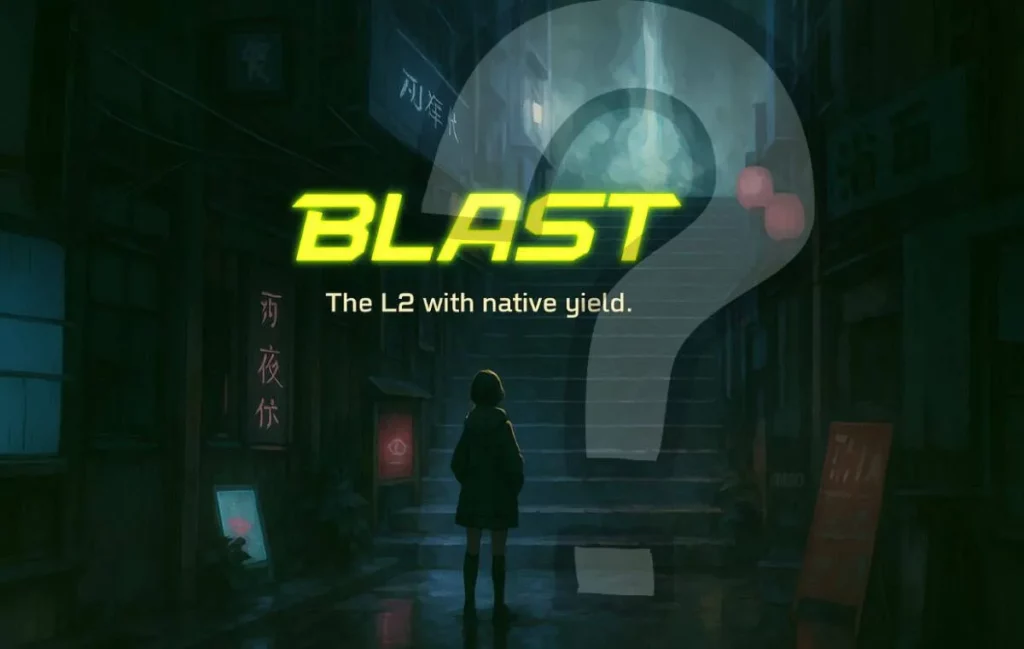
BLAST Chain in 2025: From $2.7B TVL to Near-Collapse in Under Two Years
Since its launch in November 2023, BLAST has emerged as one of the most innovative and controversial Layer 2 networks in the crypto space. The platform’s initial growth and introduction of genuine technological innovations have not been enough to overcome significant challenges and ongoing security concerns.
BLAST’s unique feature is its ability to offer automatic native yield on ETH and stablecoins deposited on the platform, a departure from traditional staking methods that require users to lock funds in specific protocols. Instead, BLAST provides passive income directly to holders – approximately 4% for ETH and 5% for stablecoins through integration with established platforms like Lido and MakerDAO.
While this approach has genuine merit, critics argue that the aggressive marketing around these yields, combined with an invite-based referral system, creates dynamics reminiscent of pyramid schemes. The comparison is not insignificant, as it has dogged the project since its inception.
Initially, BLAST’s technical capabilities were impressive: it could handle up to 100,000 transactions per second with 2-second block times, far surpassing Ethereum’s mainnet capacity. The platform utilizes optimistic rollup technology, a proven scaling solution that maintains Ethereum’s security while dramatically improving performance.
However, concerns about the platform’s governance and transparency persist. Critics point out that the anonymity of signatories raises trust issues, and the upgradeable nature of smart contracts allows those controlling the multisig to theoretically modify the system.
Dan Robinson, Paradigm’s representative, criticized the project’s messaging and execution, labeling it problematic in both areas. This criticism from a major supporter underscored the legitimacy of concerns surrounding the platform’s approach.
Despite these issues, BLAST still has a significant success story: Fantasy.top’s rise. The social trading card game that gamifies crypto influencer activity on Twitter generated an astonishing $11 million in revenue within ten days of its May 2024 launch. It continues to maintain momentum even as the broader BLAST ecosystem struggles.
This achievement also highlights one of the main challenges facing BLAST: it has become heavily associated with speculative gaming and “degen” culture, rather than serious decentralized finance (DeFi) infrastructure. While the founder, Tieshun Roquerre (known as Pacman), has argued that this focus on crypto-native users was intentional – citing the need to build network effects before targeting mainstream adoption – critics question whether this approach can sustain long-term growth.
The BLAST ecosystem has faced numerous security incidents, which raises questions about its ability to attract and retain serious projects. Several high-profile scams have occurred on the platform: RiskOnBlast suffered a rug pull in February 2024, resulting in losses of approximately 500 ETH ($1.3 million). Additionally, Super Sushi Samurai experienced a $4.6 million exploit due to smart contract vulnerabilities.
The Blockchain investigator ZachXBT identified organized fraud groups targeting BLAST with sophisticated scam projects. These incidents, while not necessarily reflecting flaws in BLAST’s core technology, indicate challenges in ecosystem governance and project vetting that could deter legitimate developers and users.
In conclusion, for crypto enthusiasts, BLAST serves as a case study on how innovative technology alone is insufficient for long-term success. Building sustainable blockchain ecosystems demands not only technical excellence but also robust governance, genuine utility, and the ability to maintain user engagement beyond initial incentives.
Source: bravenewcoin.com


